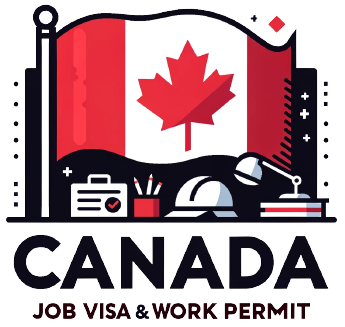The allure of working remotely for a Canadian company is an opportunity many global professionals are eager to explore. With the rise of digital communications and the robust Canadian job market, remote work has become more accessible than ever. But like all international job opportunities, understanding the nuances of the Canadian job visa landscape for remote work is crucial. This article breaks down everything you need to know to embark on your remote Canadian career journey.
Understanding the Canadian Job Visa Landscape for Remote Work
Even if your job is remote, the legalities are clear: if you’re a foreign national working for a Canadian company, it’s imperative to have a proper visa or work permit. This requirement holds even if you never set foot in Canada during your employment. Why? Because your compensation originates from Canada, and thus, you’re contributing to and benefiting from the Canadian economy
Why a Visa for a Remote Job in Canada?
While you might be thinking, “I’m not physically in Canada, so why do I need a visa?”, there are solid reasons:
- Legal Protection: A proper visa ensures that you’re legally employed and protected under Canadian employment laws.
- Tax Implications: With a work permit, you can correctly navigate any tax obligations in both Canada and your home country.
- Future Opportunities: Holding a legitimate visa can smooth the pathway for future immigration or on-site opportunities in Canada.
A Step-by-Step Canada Immigration Guide for Remote Employees
1. Job Offer in Hand: Before visa considerations, you need a formal job offer from a Canadian employer, even for remote positions.
2. Determine the Right Visa: The Temporary Foreign Worker Program (TFWP) or the International Mobility Program (IMP) are typically the go-to options. Your choice depends on your job type, contract length, and other specifics.
3. Labour Market Impact Assessment (LMIA): Your Canadian employer may need to obtain an LMIA. It verifies that no Canadian resident is available for the job role. Some remote jobs, depending on their nature, might be exempt.
4. Submit the Work Permit Application: With your job offer (and possibly the LMIA), you can now apply for your Canada work permit for remote workers.
5. Await Approval: The processing time can vary. Once approved, ensure you adhere to all the conditions outlined in your permit.
Roles of a Canadian Employer Hiring Remotely
- Documentation: They must provide proper job contracts and assist with the LMIA process if required.
- Compliance: Ensure they’re compliant with employment laws concerning remote foreign workers.
- Compensation: Remote workers should be compensated fairly, in line with Canadian standards, irrespective of their physical location.
Top Tips for Ensuring a Successful Application
- Accuracy is Key: Ensure all provided information is correct. Misrepresentation can lead to visa rejection.
- Stay Updated: With immigration rules subject to change, regularly check the IRCC website.
- Professional Consultation: Consider consulting an immigration expert for tailored advice.
Adapting to Canadian Workplace Culture Remotely
While you might not be present in Canada physically, imbibing the work culture is essential. Canadian workplaces value punctuality, clear communication, and respect for diversity. Engage in team interactions, attend virtual office events, and stay open to feedback. This ensures seamless work collaboration and enriches your remote working experience.
In Conclusion
A remote job in Canada offers the best of both worlds — the flexibility of working from your home country and the experience of being part of the Canadian job market. With proper understanding, preparation, and the right documentation, your journey as a remote employee for a Canadian company can be smooth and rewarding

